- Home
- Simon Winchester
The Men Who United the States: America's Explorers Page 12
The Men Who United the States: America's Explorers Read online
Page 12
There are a scattering of memorials. There is a stone in Utah marking the spot where the army topographer John Gunnison and seven of his party were killed by Ute Indians while surveying a route for a westbound railroad. Emory and five others had mountains named for them, commemorating the days of the Great Reconnaissance, and Frémont, Gunnison, and less-well-known topographical corps figures with names like Nicollet, Warner, Stansbury, and Raynolds are marked today in the names of rivers, towns, counties, and valleys, all west of the Mississippi in the lands they were charged with exploring.
By the beginning of the Civil War, the existence of a separate corps of topographer-engineers essentially ceased, and civilian scientists were taking over as delineators of the nation’s landmass. But the culminating triumph of the topographers’ brief ascendancy was a map. A great and, for its time, quite memorable map.
It was an elegant triumph of cartography that still reigns supreme in the intellectual memory of America’s making. It was drawn in 1857 by a curious and somewhat tragically luckless soldier named Gouverneur Kemble Warren, a man “with the look of an Indian” and clearly “of a nervous temperament,” whose shaky military reputation was determined by two very contradictory events that befell him during the Civil War.
After the first, he was declared a hero. His topographically trained eagle eye had spotted a major flaw in the defenses of the Union troops as they lined up at Gettysburg. He managed to rustle up enough soldiery to plug the gap and then went on to save the day, though he was lightly wounded in the fight. In tribute, he was called, for the hill where he fought, the Savior of Little Round Top.
All changed a year later, when he became an instant pariah. A rival saw to it that Warren was summarily removed from his command during the heat of a battle for having been absent from the field. His removal was humiliating, and though the decision was later revoked and Warren was exonerated, it devastated his career and blackened his name.
His work on the map, however, had been performed some six years before the Civil War broke out, long before his military career was so engulfed in turmoil. It was in 1854, back while he was out surveying the Mississippi Delta, that he was summoned home to West Point and ordered to join a new government body to be called the Office of Pacific Railroad Explorations and Surveys. His job was to travel out west and to collect and collate all of the possible information about the American land that stretched to the west of the hundredth meridian.
This map would cover the entirety of the West. It was to be a defining snapshot of Manifest Destiny and a finely turned portrait of the much-vaunted policy of continentalism. It was to be designed to show how the nation could in time be united, coast to coast, as Warren was ordered to make special cartographic note of four main routes that could be taken by a railroad linking the Pacific coast ports with the terminals on the Mississippi River.
Such a construction project, of vast ambition, expense, and duration, was still a dream, but the map would show how a thing so insanely great might one day be accomplished—and thus how all of America’s states might one day become fully connected with one another.
Gouverneur Warren worked four years, and the map that eventually resulted, the Warren Map of 1858, is quite without equal. It remained the definitive map of the western United States for years to come, the aggregate of all that was known about the West of America at that moment in history. The map has a beauty and an accuracy that entirely transcend the fuss over its maker’s later disputed battlefield behavior.
And yet his map is far from complete. In the so-called Plateau Province, encompassing 130,000 square miles of the most spectacular countryside of Colorado, New Mexico, Utah, and Arizona, centered on the bronze marker that shows the only place in America where four states meet, the Warren map has a curious vagueness about it, a fuzziness of line and contour that suggests inadequate information. Elsewhere it is worse. The word Unexplored yawns across eight quite vacant degrees of longitude.
It would take the later efforts of four great civilians, in fact, to parse and determine and discern it all, to get it all right, to render Unexplored into Explored and Fully Known.
So far as the West was concerned, there were still too many myths to clear up, scores of fantasies to deny, clouds of bubbles to burst. Fantasists aplenty were feeding an insatiable public’s lust for lurid tales about the nation’s vast unknown. William Gilpin was one such: a papermaker’s son from Delaware who resigned a commission in the army to join settlers on the Oregon Trail, he became notorious for his Messianic, eye-gleaming boosterism, quite detached from reality.
The need to sketch out the possible routes for a transcontinental railway led the Civil War hero Gouverneur Warren to draw one of the finest and most accurate early maps of the American West.
Two billion people could be accommodated with ease in the western territories, he would claim in his many public speeches. Scores of millions of cattle could be farmed in the prairies. “The destiny of the American people is to subdue the continent,” he declared—and anyone and anything who stood in the way, be they Sioux or be they buffalo, could be swept aside. He was a firm believer in the climatologically nonsensical theory that “rains follow the plow.”* And with this as his principal sales pitch, he peddled huge acreages of Western real estate—planning cities like Gilpintown and Centropolis, which in fact never got built—and made millions out of the gullible and the hopeful. He died in Denver, a very rich man.
Then there was a sometime imposter and mountebank named Samuel Adams, who almost managed to wheedle $20,000 from the US Congress as compensation for the hazards of an expedition he supposedly took along the Colorado, from which he sent back reports filled with blatant absurdities. He claimed, for example, that stern-wheeled steamships would be able to navigate up the Colorado for some hundreds of miles from its mouth and that such dangers and rapids as others had seen from a distance “almost disappeared at the approach of the steamer.”
It was all the sheerest nonsense, of course, the bragging of a fraud and a charlatan. It displayed, said Wallace Stegner more soberly, “resistance to fact and logic.” And yet these same reports told many nineteenth-century newspaper and magazine readers, all eager for tales of adventure and fortune, exactly what they wanted to hear. They were reports that won “Captain” Adams, as he liked to style himself, all too many allies, men “who were neither so foolish in their folly nor so witless in their rascality as he, but whose justification and platform was the same incorrigible insistence upon a West that did not exist.”
The West at the time was consumed by fiction. There were barroom rumors and penny-dreadful tales from heroic travelers—and tales more fanciful still from those who had no heroism about them. There were deathbed revelations related and embellished by survivors of massacres and accidents and unfortunate occurrences. There were fragments of doggerel and acres of bad poetry and mournful songs.
They told of scores of improbable and alluring things. Of a sacred mountain in Colorado that sported a pure white cross at its summit. Of a clutch of Aztec dwellings, complexes of adobe that showed where the last relatives of Montezuma had lived in North America. Of tiny craters that whistled and snorted and threw out blazing liquids, and huge gushes of boiling water that jetted into the sky at intervals.
It was all so wonderful, so improbable, so implausible—and yet not necessarily quite so impossible.
Hence the government decision, taken initially in 1867, to uncover and determine the truth about a West that did exist, as counter to the yarns about a West that might, could, or should be there. It was for that reason that what became known as the Four Great Surveys of the West were formally established and were then seriously publicly financed, properly staffed, and sent out for months and years in the field to find out once and for all what about the Western territories was fact and what was fiction.
Two of these surveys were administered by the Department of War. They had a kind of Masonic symmetry about them, the basis of one of them being a
line that went from north to south, the basis of the other being a line going from east to west. Lieutenant George Wheeler, a surveyor and engineer, was assigned to lead what were called the United States Geographical Surveys West of the One Hundredth Meridian. And a Yale-educated civilian geologist, Clarence King, was in charge of an overlapping area defined by an imaginary line that was at an exact right angle to it: the United States Geological Exploration of the Fortieth Parallel.
The other two surveys—their creation a harbinger of the steady switch-over from the old military to the new civilian way of surveying—came under the authority of the Department of the Interior. A civilian geologist and medical doctor, Ferdinand Hayden, was given what sounds to have been an utterly unwieldy assignment: he would undertake what was to be called the United States Geological and Geographical Survey of the Territories. And most famous of all, there was John Wesley Powell, chosen to lead the United States Geographical and Geological Survey of the Rocky Mountain Region.
John Wesley Powell was a geologist and soldier, the first European American to explore the entire length of the Grand Canyon. He did this and all of his subsequent heroics with just one arm, his left, after having been hit with a minié ball at the Battle of Shiloh.
THE SINGULAR FIRST ADVENTURE OF KAPURATS
Powell was a big, blunt, cautious, skeptical, heavily bearded no-nonsense man, the son of an impoverished Englishman and licensed exhorter—a fancy term for a wandering preacher—who had migrated to New York and then to a farm in Illinois, in hope of better things. From the very beginnings the young man was marked out as curious: a dispassionate youth, a loner, a voracious reader, helped by a local farmer who seems to have learned the principles of natural philosophy from one of the New Harmony teachers who had fanned out across the Midwest in the 1830s.
John Wesley Powell, geologist and first explorer of the Grand Canyon, did all his surveying minus most of his right arm, which was shot off by a minié ball at the Battle of Shiloh. He became the second director of the US Geological Survey.
Wes Powell, as he was familiarly known, was also given to long-distance ramblings (four months tramping the wilds of Wisconsin in 1855, for example) and to solo canoe expeditions along the Ohio and the Mississippi. Charles Lyell, the Scotsman who twenty years earlier had written his famous Principles of Geology, had boated down these same rivers and had written two books of his American travels, with which Powell was familiar. The young man did much the same as Lyell, exploring, observing, and collecting—on the way amassing impressive numbers of rock specimens and fossils. So assiduous was he that he won an Illinois state prize for his glass cases of mollusks.
Publicly, he was little troubled by having his arm shot off. Wallace Stegner, writing in 1954, captured Powell’s insouciance perfectly: “it affected Wes Powell’s life about as much as a stone fallen into a swift stream affects the course of the river.”
He saw action in nine further set-piece battles, from Charapini Hill to Vicksburg, before retiring from the army with the rank of major, which he would use for the rest of his civilian life. That was in 1865; later that same year, he took up the post of geology professor at a college in Bloomington, Illinois, and by Christmas was already dreaming of taking his students on a collecting expedition into the Rocky Mountains and farther west, mainly to find items to put in the glass cases of the university museum.
Two years later—the pivotal year, 1867—he decided that his planned adventure positively deserved some help from the government that he had served in wartime.
So he went to Washington, fighting his way through the crowds of other seekers of federal favor—all of them behaving like “rutting stags,” as he put it—and eventually secured from his old commanders the promise of army rations for his party, even a military escort if he would agree to take his students collecting in the Sioux territories in the Dakota Badlands. But crucially, he ignored this second offer, for his old friend General William Tecumseh Sherman, of the famous march through Georgia, advised him otherwise. He should not go to the Dakotas at all. Instead of stirring up trouble among the Sioux of the northern plains, the understandably war-weary general told him, he should head south and probe the abundant mysteries of the Rockies of Colorado.
Sherman’s advice changed Powell’s life. It was a choice that set him on the path to win a reputation as perhaps the preeminent soldier-scientist-explorer of his day, for Powell and his men would in time head down into the Colorado River, and they would journey, for the first time any white men had done such a thing, from one end to the formidable other of that most immense natural wonder, the Grand Canyon.
The epic journey was formally named the Rocky Mountain Scientific Exploring Expedition and was technically not one of the Four Great Surveys—though its eventual success was the reason Powell was subsequently selected as leader of one of them. But success was by no means guaranteed, and in the planning of the expedition no sponsor was either especially enthusiastic or particularly generous. Aside from the promised army rations—food for twelve, to be drawn from Western army posts; cash to be given if rations were not available—Powell’s only quasi-official support came from the Illinois State History Society and a local university.
The Smithsonian Institution gave him some scientific equipment; the Chicago Academy of Sciences, a little more. Otherwise, he was on his own—and such men as agreed to come with him went essentially as volunteers, for there was almost no money to pay them.
Not surprisingly, given such exigencies, it took him and his team some while—two full seasons, in fact—to put together the expedition and then to accomplish its intended mission. During the first season, Powell and his party, which would be steadily winnowed and trimmed to the six men who made it all the way, made their preparations and consolidated their friendships with the local Ute Indians. It was while the party was surveying and mapping the White and the Green Rivers, major tributaries of the Colorado, that the Ute gave him the name Kapurats. There was nothing poetic about it; it meant quite starkly Arm-off.
After a first winter spent in a frigid campsite and a good deal of throat-clearing—including another trip back to Washington by Powell to beg for a little more financial help and then a diversion to Chicago to have proper boats built—the party set off.
There is a particular historical irony about both the place and the time chosen for their departure. Powell’s men slid their four initial boats* into the Green River on Monday, May 24, 1869. The location was the village of Green River, not far from the bridge, which had been built the year before, where the brand-new Union Pacific railroad tracks crossed the river.
The railroad provides the coincidence and the irony. For it had been just two weeks before, on Monday, May 10, and a mere two hundred miles to the west, at a place called Promontory Summit, in Utah, that the two steam engines, the Union Pacific’s Locomotive No. 119 and the Central Pacific’s Jupiter, had met, cowcatcher to cowcatcher, on the lines that were to be joined by the famous golden spike. The transcontinental railroad had been completed, and trains were from this moment on crossing regularly between America’s Eastern cities and those in the West. And in doing so, they would rattle across this very bridge, beneath which John Wesley Powell and his men were setting off into the unknown.
Trains with restaurant cars and pianos and sleeping berths and night porters and sundry other elements of comfort and luxury would pass overhead of their launching site, running between New York and California by way of Wyoming at thirty miles an hour, crossing the continent in only seven days. Powell’s men pushed their craft into the waters immediately below the bridge and would not emerge from their own unprecedented epic for ninety-eight days of nearly perpetual terror, hunger, cold, and wonder. The bridge and its trundling traffic might provide evidence that the new world was catching up fast, but down below on the waterline it was clearly not catching up everywhere for everyone.
I camped once by the waterline of the Green River, down in the iron-red canyons that Powell’s
men encountered soon after they left, just as the stream begins to cut its teeth deep into the plateau. I found my site close to where the Yampa River joins the course of the mainstream, a place Powell named Echo Park. It lies in far western Colorado, close to the Utah line. To get there required a thirty-mile drive from the highway, then a further eight miles down a winding dirt track. The site looked like a tiny oasis, and indeed the few acres of sandy soil at the junction had once allowed the building of a tiny hardscrabble farmhouse, the ruins of which still lean and creak amid the sagebrush. The farm had stood in an amphitheater of cliffs seven hundred feet high, all as sheer and smooth as if sliced down with a cheese wire, all seemingly painted with an ocher gloss still called desert varnish. Eagles breezed past and soared on the thermals, their flight feathers seeming almost to graze the sunset-gleaming rock faces.
A shout made here is repeated four or five times (Powell counted twelve), its echoes repeating echoes until fading away and being replaced by the gurgling of the eddies, the sounds of each reflected back and forth from the canyon walls.
Steamboat Rock, a gigantic monolith of red and green and black-streaked Upper Carboniferous sandstone, stood sentinel beside the river, the waters washing around the base in a great lazy circle. I spread my tent on a sand spit across from it, lighting a fire with brushwood, and after pork and beans and beer, I sat gazing across at it until the sun dipped below the cliff edges. The huge rock turned purple and then black, and then became just an immense shiplike shadow that blacked out a full quadrant of the sky. There was no other company that night, and through the star-filled dark, there were no other sounds, except a dawn breeze shaking the cottonwoods and willows, and always the river lapping steadily and powerfully past.

 The Surgeon of Crowthorne
The Surgeon of Crowthorne Korea: A Walk Through the Land of Miracles
Korea: A Walk Through the Land of Miracles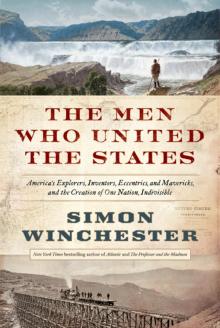 The Men Who United the States: America's Explorers
The Men Who United the States: America's Explorers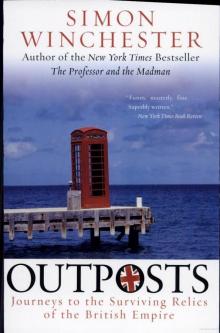 Outposts: Journeys to the Surviving Relics of the British Empire
Outposts: Journeys to the Surviving Relics of the British Empire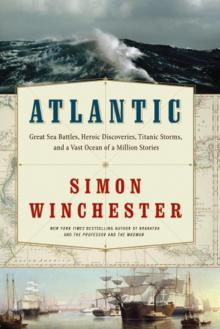 Atlantic: Great Sea Battles, Heroic Discoveries, Titanic Storms
Atlantic: Great Sea Battles, Heroic Discoveries, Titanic Storms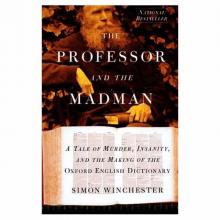 The Professor and the Madman: A Tale of Murder, Insanity
The Professor and the Madman: A Tale of Murder, Insanity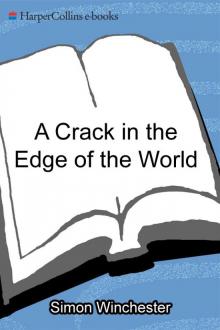 A Crack in the Edge of the World
A Crack in the Edge of the World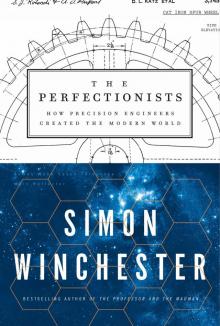 The Perfectionists: How Precision Engineers Created the Modern World
The Perfectionists: How Precision Engineers Created the Modern World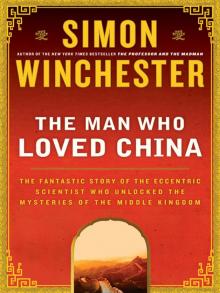 The Man Who Loved China: The Fantastic Story of the Eccentric Scientist
The Man Who Loved China: The Fantastic Story of the Eccentric Scientist The River at the Center of the World: A Journey Up the Yangtze
The River at the Center of the World: A Journey Up the Yangtze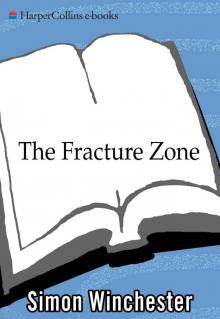 The Fracture Zone: My Return to the Balkans
The Fracture Zone: My Return to the Balkans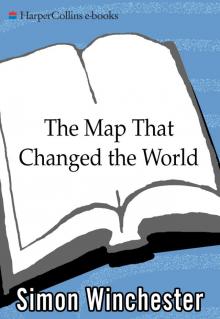 The Map That Changed the World
The Map That Changed the World Krakatoa: The Day the World Exploded
Krakatoa: The Day the World Exploded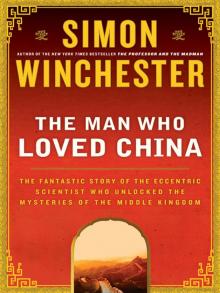 The Man Who Loved China
The Man Who Loved China The River at the Centre of the World
The River at the Centre of the World Bomb, Book and Compass
Bomb, Book and Compass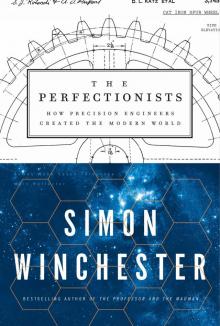 The Perfectionists
The Perfectionists The Meaning of Everything
The Meaning of Everything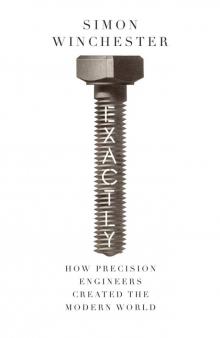 Exactly
Exactly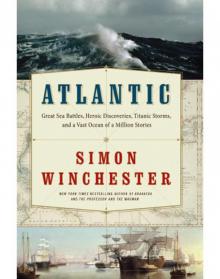 Atlantic
Atlantic Korea
Korea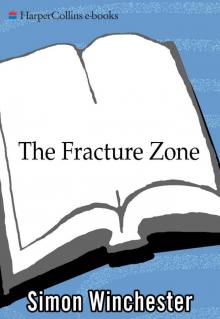 The Fracture Zone
The Fracture Zone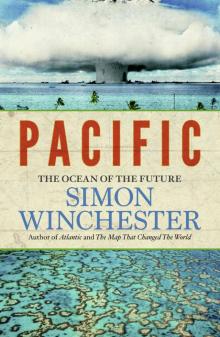 Pacific
Pacific Krakatoa
Krakatoa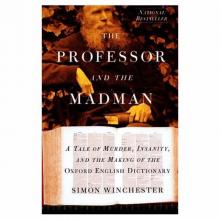 The Professor and the Madman
The Professor and the Madman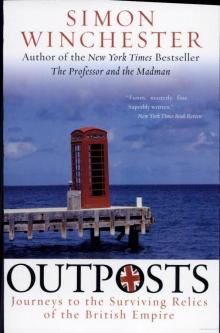 Outposts
Outposts